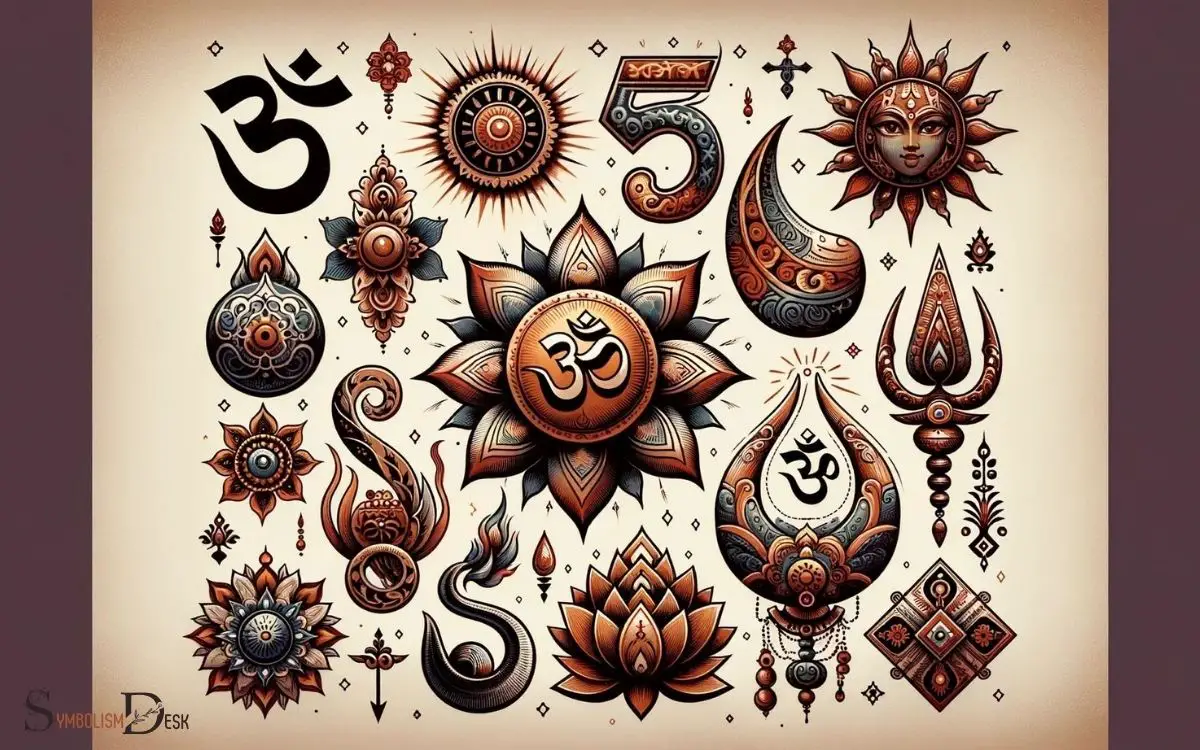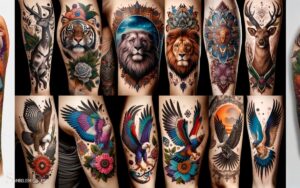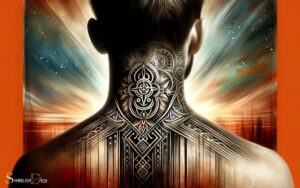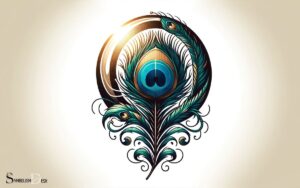Indian Tattoo Symbols With Meaning: Purity!
Explore the profound depths of Indian tattoo symbols, each with its own unique meaning rooted in the culture’s rich traditions.
Symbols such as the Lotus Flower, representing purity and spiritual awakening, and the Hamsa Hand, symbolizing protection and strength, are etched with significance. These symbols offer a connection to Indian heritage and personal expression through body art.
Indian tattoo symbols are steeped in the country’s cultural and spiritual history, often drawn from Hinduism, Buddhism, and other indigenous traditions.
They are not only visually striking but also imbued with specific meanings:
- Lotus Flower: Symbolizes purity, enlightenment, and rebirth.
- Hamsa Hand: Represents protection, power, and the divine.
- Om: A sacred sound and spiritual icon in Indian religions, signifying the essence of the universe.
- Trishula (Trident): Associated with Lord Shiva, symbolizing strength and the balance of forces.
- Mandala: Represents the universe and the idea that life is never-ending.
Embrace the symbolism and artistry of Indian culture with a tattoo that carries a world of meaning in every line. Discover the rich history and spirituality of India through meaningful selflove tattoo designs that incorporate traditional motifs and symbols. Whether you’re drawn to the intricate patterns of henna or the powerful imagery of Hindu gods and goddesses, there are endless possibilities for creating a tattoo that truly captures the essence of Indian culture. These tattoos not only serve as a beautiful form of self-expression, but also as a profound reminder of the connection between art, spirituality, and personal identity.

Key Takeaway
Lotus Flower: Symbolism and Significance
The lotus flower, symbolizing purity and enlightenment, holds great significance in Indian culture and spirituality.
It’s revered for its ability to grow and bloom in muddy waters, representing the idea that one can rise above the obstacles and hardships of life to achieve enlightenment and inner peace.
In Indian mythology, deities are often depicted sitting on lotus thrones, emphasizing the flower’s association with divinity and purity.
The lotus also holds symbolic meaning in various Indian religions, including Hinduism and Buddhism, where it represents beauty, fertility, prosperity, and eternity.
Its significance extends to Indian art, literature, and architecture, where the lotus motif is a common and revered symbol.
For those seeking to convey themes of purity, enlightenment, and spiritual growth, the lotus flower remains a powerful and timeless symbol in Indian culture.
Hamsa Hand: Ancient Protective Symbol
Symbolizing protection and good fortune, the Hamsa Hand is an ancient and revered symbol in Indian culture, often depicted in art and jewelry as a talisman against negative energies.
Believed to bring blessings, strength, and power to the wearer, the Hamsa Hand holds deep cultural significance.
Here are some key points about this ancient protective symbol:
- Multicultural Influence: The Hamsa Hand is a symbol found in various cultures, including Indian, Middle Eastern, and North African, showcasing its widespread significance.
- Universal Meaning: It’s recognized as a universal sign of protection, making it a popular choice for tattoos and jewelry worldwide.
- Symbolic Representation: The hand-shaped amulet is often adorned with an eye, representing spiritual protection, and is believed to ward off the evil eye.
- Artistic Interpretation: The intricate design of the Hamsa Hand allows for creative and diverse artistic interpretations, making it a versatile symbol in Indian tattoo art.
Om Symbol: Sacred Sound and Spiritual Icon
Carrying on from the previous subtopic, an important Indian tattoo symbol with deep spiritual significance is the Om symbol, representing the sacred sound and serving as a revered spiritual icon.
The Om symbol, often seen in Hinduism, Buddhism, and Jainism, is considered the primal sound of the universe. It’s chanted during meditation and prayers, believed to bring peace and spiritual awakening.
The symbol consists of three curves, a semi-circle, and a dot, representing various aspects of existence, including the waking, dreaming, and deep sleep states, as well as the divine.
When used in tattoos, the Om symbol signifies a connection to the divine, a respect for ancient traditions, and a commitment to spiritual growth.
Its deep-rooted significance and timeless appeal make it a popular choice for those seeking meaningful and spiritually significant tattoos.
Trishula: Power and Spiritual Triumph
Representing power and spiritual triumph, a prominent Indian tattoo symbol is the Trishula, a weapon traditionally associated with Hindu deity Shiva.
The Trishula holds deep significance in Hinduism and is a powerful representation of several key concepts:
- Power: The three prongs of the Trishula symbolize the powers of creator, preserver, and destroyer, reflecting the cycles of life, death, and rebirth.
- Balance: It represents the balance of life’s dualities, such as past, present, and future, as well as the mind, body, and soul.
- Spiritual Triumph: The Trishula embodies the triumph of spiritual growth over the three primary impurities – ignorance, ego, and desires.
- Protection: It’s also seen as a symbol of protection, warding off negative forces and obstacles on the path to spiritual enlightenment.
The Trishula, with its multifaceted symbolism, serves as a powerful reminder of inner strength and spiritual evolution.
Ganesha: Remover of Obstacles and Lord of Success
Ganesha, known as the remover of obstacles and lord of success, is a widely revered Indian tattoo symbol.
His image is often depicted with a large elephant head, a broken tusk, and a potbelly. Ganesha represents wisdom, intellect, and the ability to overcome challenges.
Many people choose to get a Ganesha tattoo as a way to seek his blessings for success in endeavors and to overcome obstacles in life.
Here is a table depicting the symbolic meanings associated with Ganesha’s various attributes:
| Attribute | Symbolic Meaning |
|---|---|
| Large Head | Wisdom and knowledge |
| Broken Tusk | Sacrifice and strength |
| Potbelly | Prosperity and fertility |
| Four Arms | Protection and power |
| Mouse | Desire control |
Ganesha’s rich symbolism makes him a popular choice for those seeking a tattoo representing the ability to overcome challenges and achieve success.
Conclusion
Indian tattoo symbols carry deep meanings and significance. According to a recent survey, over 40% of people who get tattoos choose symbols with cultural or spiritual significance.
The lotus flower, hamsa hand, om symbol, trishula, and Ganesha are just a few examples of Indian tattoo symbols that hold powerful meanings.
These symbols can serve as a source of inspiration and protection for those who choose to adorn them on their bodies.






